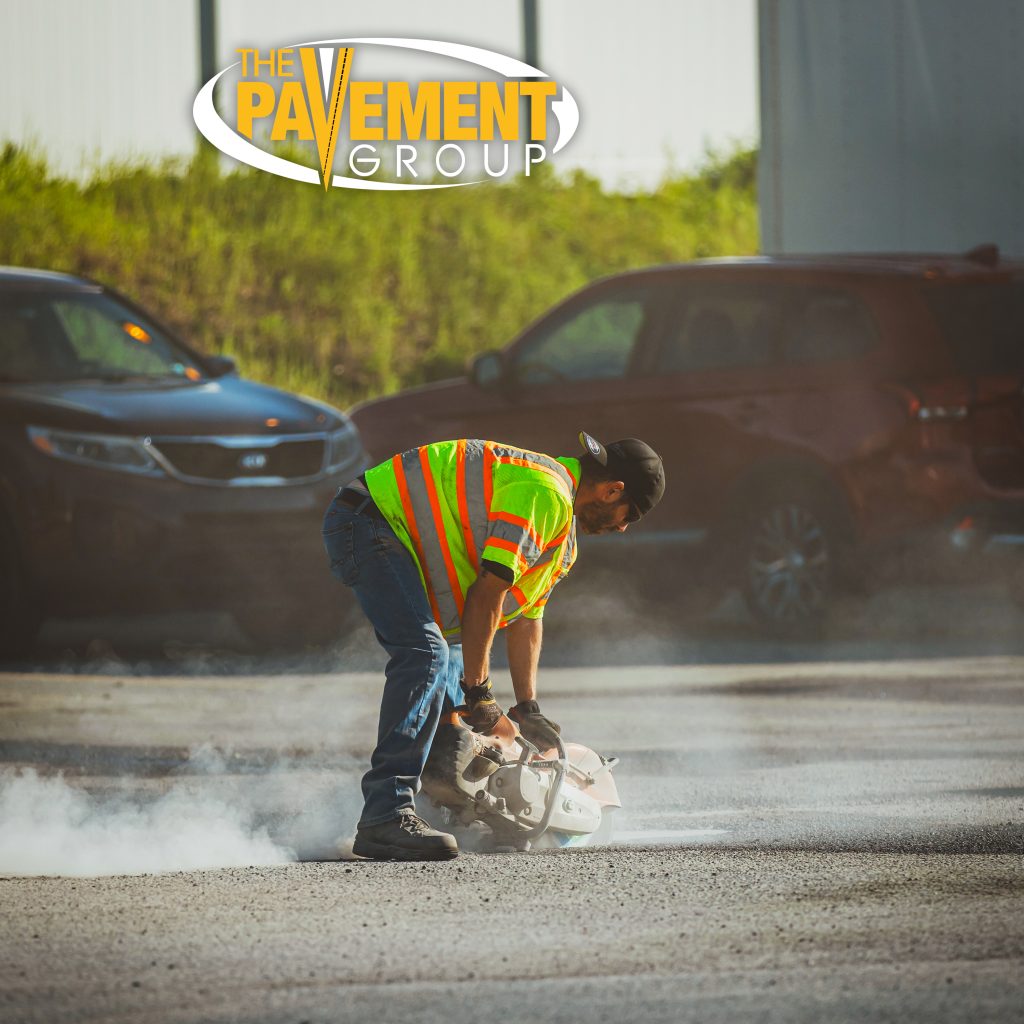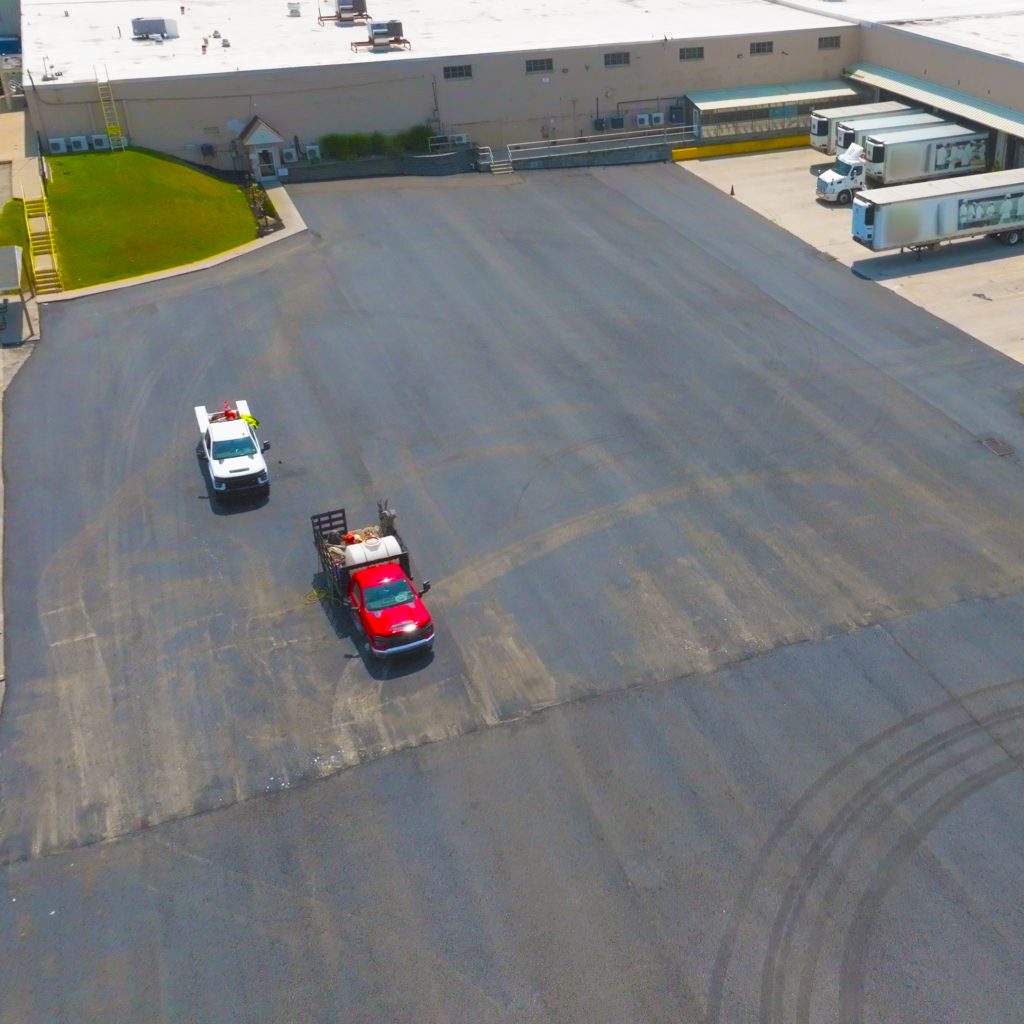Most people don’t think about the science, the planning, and the serious budgeting that goes into every paved surface we drive on. But if you’re a property manager in Pittsburgh, a facilities director in Charlotte, or a business owner in Nashville, you already know one truth. Your budget for a commercial parking lot isn’t just a space for cars. It’s the first handshake your customers have with your business. And let’s be real, nobody wants their handshake to be cracked, crumbling, or full of potholes.
So here’s the million-dollar question: how do you actually budget for commercial parking lot paving without blowing your capital expense fund or cutting corners that cost you more later? We’ve been in the trenches of paving projects for years, and I’m here to share how we break it down at The Pavement Group so it feels less like guesswork and more like a roadmap.
Why Your Parking Lot Budget Matters
Think about it this way. Your parking lot sets the tone before anyone walks in the door. If it’s smooth, marked clearly, and draining water properly, it screams professionalism. If it’s a mess, well, you can imagine the story it tells. But beyond looks, budgeting matters because:
- Safety is everything. A poorly maintained lot increases liability risks from trips, falls, or accidents.
- Longevity saves you money. Every dollar spent on preventive maintenance avoids three to five dollars spent on full reconstruction down the road.
- Resale value is real. If you ever sell your property, a well-maintained lot adds serious curb appeal and boosts the property’s value.
Step 1: Know Your Starting Point
Before you budget, you need to know what you’re working with. Here’s what we advise clients:
- Get a professional assessment. Don’t eyeball it. Bring in a paving contractor who will measure, core test, and evaluate drainage.
- Look for warning signs. Cracks, standing water, faded striping, or soft spots under the surface are early clues your lot needs more than a sealcoat.
- Map out the square footage. Costs are calculated by area, so precise measurements make your budget accurate.
When we evaluated a distribution facility in Columbus last year, the client thought they needed a full repave. Turns out, 60% of the lot was structurally sound and only needed patching and sealcoating. That saved them nearly $400,000.
Step 2: Understand Cost Drivers
Parking lot paving isn’t one flat price per square foot. Several factors swing the budget:
- Material choice. Asphalt is typically less expensive than concrete, but climate, usage, and traffic volume dictate what’s best long-term.
- Sub-base preparation. If your soil is weak or drainage is poor, the cost of fixing the foundation will add up.
- Thickness of pavement. A retail strip mall lot doesn’t need the same thickness as a heavy trucking terminal.
- Local labor and material prices. Costs vary city to city, what’s true in Philadelphia may be totally different in Dallas.
- Accessibility and phasing. If your lot can’t shut down all at once, phasing the project in sections might slightly increase labor costs.
Step 3: Plan for Maintenance in Your Budget
This is the step people skip, and it’s the one that bites them later. Thinking your commercial parking lot budget is a one-time thing? Think again! You need a plan to manage expenses effectively.
Budget annually for:
- Sealcoating every 3–5 years to protect against water and UV damage.
- Crack filling as soon as they appear to stop water infiltration.
- Line striping for safety, ADA compliance, and appearance.
- Patching localized damage before it spreads.
Think of maintenance as insurance. A trucking company in Harrisburg partnered with us, spending $18,000 annually on upkeep. Over ten years, they extended the lot’s lifespan by at least 12 more years, saving hundreds of thousands on a full replacement.
Step 4: Prioritize Phases
Not every property has the budget to do it all in one go, and that’s okay. We help clients create multi-year plans that spread the investment without sacrificing safety.
Here’s a smart order to follow:
- Fix structural issues first. No sense in painting pretty stripes on failing asphalt.
- Handle drainage. Standing water accelerates pavement failure.
- Surface repairs and sealcoating. Protect what’s left and make it last.
- Striping and signage. Save this for the end, it’s the finishing touch.
“We run a medical office park outside of Cincinnati and the parking lot had turned into a headache. Patients complained about potholes, and water pooled every time it rained. The Pavement Group came out, did a thorough inspection, and showed us exactly where the problems were. Instead of pushing for a full replacement, they built us a phased plan. We resurfaced the worst areas first, then budgeted for sealcoating and striping the next year. The difference is night and day. Our patients comment on it constantly, and the cost was way more manageable than I expected.”
– Michelle R., Property Manager, Cincinnati OH
How to Get Accurate Budget Numbers
If you’re sitting with a blank spreadsheet, trying to figure out a ‘commercial parking lot budget,’ here’s how to fill it in with confidence:
- Ask for multiple quotes. Not all contractors approach the work the same way. Compare apples to apples.
- Look at lifecycle costs, not just upfront. The cheapest bid today may cost you double in five years if corners are cut.
- Work with experienced commercial paving contractors. Residential driveway experience doesn’t always translate to large-scale parking lots.
- Factor in contingency. Add 10–15% wiggle room for unexpected soil or drainage issues.
Common Budgeting Mistakes
We’ve seen it all, and here are the top mistakes to avoid:
- Ignoring drainage. Water is the number one enemy of pavement.
- Skipping annual maintenance. A $300 crack repair today prevents a $30,000 base failure tomorrow.
- Underestimating traffic loads. A retail plaza has different needs than a logistics hub.
- Not planning for ADA compliance. Striping, signage, and slope requirements aren’t optional.
The Pavement Group Advantage
Here’s what sets us apart when helping businesses budget for paving projects:
- National experience, local knowledge. We work across the U.S. but know how to adapt to local conditions in places like Chicago winters or Atlanta heat.
- Data-driven assessments. We use drone imaging, core sampling, and advanced tools to give you real numbers, not ballpark guesses.
- Transparent communication. No hidden line items or surprises at the end.
- Phased planning. We help you stretch your budget smartly while keeping your property safe and functional.
Ready to Start Budgeting for Your Parking Lot?
Here’s the thing. The longer you wait, the more expensive it gets. Small cracks don’t stay small. Water doesn’t just go away. And your customers aren’t forgiving when their first impression is a bumpy, messy lot.
So if you’re a property manager, facility director, or business owner in the U.S. and you’re ready to get clarity on your paving budget, The Pavement Group is here to guide you.
Call us today or request a free paving assessment. Let’s put real numbers to your project so you can budget confidently and protect your investment.
Frequency Asked Questions
1. How do I calculate the budget for a commercial parking lot paving project?
Start by measuring the total square footage, then request professional quotes that break down material, labor, and prep costs. Factor in drainage, traffic loads, and local pricing.
2. What factors influence the cost of paving a parking lot?
Key factors include the size of the lot, material type (asphalt or concrete), soil condition, drainage requirements, thickness of pavement, and local labor costs.
3. How much does commercial parking lot paving typically cost per square foot?
On average, asphalt paving ranges between $2 and $7 per square foot, while concrete can run from $4 to $12 per square foot depending on location and scope.
4. Is asphalt or concrete better for commercial parking lots?
Asphalt is more affordable upfront and easier to repair, while concrete lasts longer and handles heavy traffic better. Climate and usage will determine the best choice.
5. How often should a parking lot be sealcoated?
Sealcoating should generally be done every 3 to 5 years, depending on weather conditions, traffic levels, and wear.
6. What maintenance costs should be included in a paving budget?
Include line striping, crack sealing, sealcoating, patch repairs, and drainage upkeep. Planning for annual maintenance keeps long-term costs lower.
7. How can I extend the lifespan of my parking lot?
Perform routine maintenance, sealcoat regularly, fill cracks quickly, ensure good drainage, and control heavy vehicle traffic when possible.
8. Do I need to budget for ADA compliance when paving a parking lot?
Yes, budgeting should include ADA-compliant striping, signage, and slope requirements to avoid fines and ensure accessibility.
9. Can a paving project be done in phases to spread costs?
Absolutely. Many businesses choose phased plans, starting with structural repairs and drainage, then resurfacing and striping in later stages.
10. What’s the biggest mistake businesses make when budgeting for parking lot paving?
The most common mistake is ignoring long-term maintenance. Skipping small fixes early leads to expensive full replacements later.


